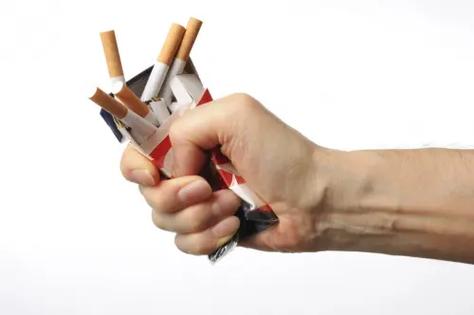Safeguarding Your Sense of Taste: A Guide to Preventing Permanent Damage from Smoking
The act of smoking is a complex interplay of addiction, habit, and sensory experience. For many smokers, the taste of a cigarette with morning coffee or after a meal is a deeply ingrained ritual. Yet, ironically, this very habit systematically attacks the very system that provides this pleasure: the sense of taste. The chemicals in tobacco smoke wage a continuous assault on the taste buds, leading to a diminished ability to enjoy food and beverages. While some damage can be reversed upon quitting, the risk of permanent harm is real. The goal, therefore, is not only to quit but to understand how to prevent lasting injury to these delicate sensory organs.
Understanding the Assault on Your Taste Buds
To effectively prevent damage, one must first understand the mechanisms of the attack. Taste buds are clusters of specialized cells, known as gustatory cells, located primarily on the tongue, but also on the roof of the mouth and the throat. They are responsible for detecting the five basic tastes: sweet, salty, sour, bitter, and umami. These cells are not static; they have a life cycle of about 10 to 14 days, constantly regenerating to keep your sense of taste sharp.
Tobacco smoke, a toxic cocktail of over 7,000 chemicals, including nicotine, tar, and hydrogen cyanide, disrupts this delicate system in several key ways:
-
Direct Chemical Damage and Coating: Hot smoke and tar directly bathe the tongue and oral cavity. Tar is a sticky substance that can physically coat the taste buds, creating a barrier that prevents flavor molecules from reaching the gustatory cells. This is akin to trying to taste a delicate spice through a layer of sludge. Furthermore, the harsh chemicals can burn and dull the sensitive surfaces of the buds, reducing their sensitivity.
-
Impaired Blood Flow and Regeneration: Nicotine is a potent vasoconstrictor, meaning it causes blood vessels to narrow. This reduces blood flow to all parts of the body, including the tiny capillaries that supply oxygen and nutrients to the taste buds. Without adequate blood flow, the regeneration process of the taste bud cells is severely hampered. Old, damaged cells are not replaced as efficiently, leading to a gradual decline in both the number and function of active taste buds.
-
Olfactory Interference: What we perceive as "flavor" is actually a combination of taste (from the tongue) and smell (from the olfactory receptors in the nose). Smoking significantly damages the olfactory system. The chemicals in smoke can damage the olfactory nerves and the lining of the nasal passages, impairing the sense of smell. When smell is compromised, flavor perception plummets, as the complex aromas that define most foods are lost. A smoker might only detect basic tastes like sweetness or saltiness, missing the nuanced flavors that make eating enjoyable.

-
Increased Risk of Oral Infections: Smoking weakens the immune system within the mouth, making it more susceptible to infections like gingivitis and periodontitis. These conditions create chronic inflammation and can indirectly affect the health of the taste buds and the overall environment of the oral cavity.
The cumulative effect of these factors is a condition often referred to as "smoker's palate." This is characterized by a general blunting of taste sensitivity. Smokers often require stronger, saltier, or sweeter foods to register the same level of flavor that a non-smoker would detect in a milder dish. This can lead to unhealthy dietary choices, further compounding health risks.
The Critical Window: Preventing Progression to Permanent Damage
The most encouraging fact is that the human body possesses a remarkable capacity for healing. Because taste buds regenerate regularly, the damage is often reversible—up to a point. The risk of permanent damage increases with the duration and intensity of smoking. The key to prevention lies in acting before the supporting structures are irreparably harmed.
Permanent damage typically occurs when the assault is so prolonged that it damages the underlying structures, such as the papillae (the small bumps on the tongue that house the taste buds) or the nerves that transmit taste signals to the brain. If these structures are scarred or destroyed, the regenerative capacity of the taste buds is lost.
Therefore, the strategy for prevention is twofold: first, to eliminate the source of the damage as quickly as possible, and second, to actively support the body's healing processes during and after cessation.
A Proactive Plan for Prevention and Recovery
-
Cessation is Non-Negotiable: This is the single most important step. There is no way to smoke and simultaneously prevent taste bud damage. Every cigarette continues the cycle of harm. Explore all available resources to quit: nicotine replacement therapies (patches, gum), prescription medications (like varenicline or bupropion), counseling, and support groups. The moment you stop smoking, the healing process begins. Blood flow improves, the coating of tar begins to clear, and the regeneration of taste buds can resume its natural cycle.
-
Hydration is Your Ally: Drinking plenty of water is crucial. Water helps to flush toxins from the body and keeps the mucous membranes in the mouth moist, creating a healthier environment for taste bud regeneration. It also helps to wash away food particles and bacteria that can contribute to oral health problems.
-
Adopt an Oral Hygiene Renaissance: Go beyond basic brushing. Use a soft-bristled toothbrush and gently brush your tongue to remove any buildup of debris and dead cells that can dull your sense of taste. Consider using a tongue scraper for a more thorough cleaning. Floss daily to maintain healthy gums and prevent periodontal disease, which can indirectly affect taste.
-
Nutritional Support for Healing: The regeneration of cells requires specific nutrients. Ensure your diet is rich in:
- Zinc: This mineral is vital for cell growth and division and is directly linked to proper taste function. Good sources include lean meats, shellfish, legumes, nuts, and seeds.
- Vitamin B12: A deficiency in B12 can cause taste disturbances. Find it in animal products like fish, meat, eggs, and dairy.
- Omega-3 Fatty Acids: These have anti-inflammatory properties that can help soothe irritated oral tissues. They are found in fatty fish, flaxseeds, and walnuts.
-
"Retrain" Your Palate: After quitting, your sense of taste will gradually return, sometimes in unexpected waves. This is an opportunity to retrain your palate. Instead of reaching for overly salty or sugary foods, experiment with a wide variety of herbs, spices, and whole foods. Try foods with different textures and complex flavors. This sensory exploration can help stimulate and "wake up" the recovering taste buds.
-
Avoid Other Irritants: While quitting smoking, give your taste buds a break from other potential irritants. Limit your consumption of extremely spicy foods, overly hot beverages, and excessive alcohol, as these can further inflame the sensitive oral tissues.
-
Patience and Professional Guidance: Recovery is not instantaneous. It can take weeks or even months for taste to fully return to its baseline. Be patient with the process. If you experience a persistent, complete loss of taste (ageusia) or a distorted sense of taste (dysgeusia) long after quitting, it is essential to consult a healthcare professional or an otolaryngist (an ear, nose, and throat specialist) to rule out other underlying causes.
In conclusion, the path to preventing permanent taste bud damage from smoking is unequivocally centered on cessation. The body's innate ability to heal is powerful, but it requires the opportunity to do so. By stopping the exposure to tobacco smoke and actively supporting oral health through hydration, nutrition, and excellent hygiene, you can safeguard your sense of taste. Preserving this vital sense is not just about enjoying food; it is about maintaining a fundamental connection to one of life's great pleasures and ensuring your long-term nutritional well-being. The best time to start was yesterday; the next best time is now.








